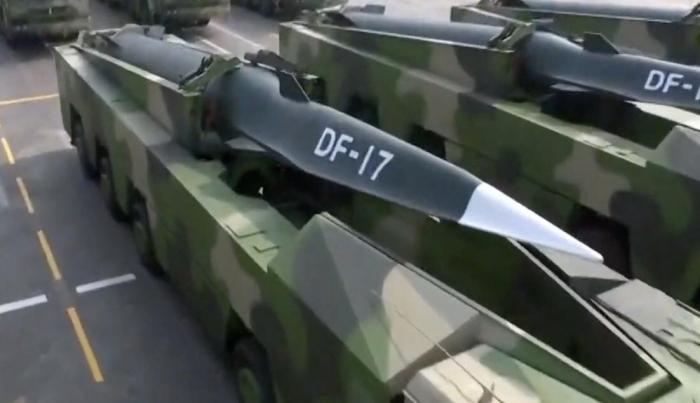India’s Defence Research and Development Organisation (DRDO) on Monday (September 07), successfully tested its indigenously-developed Hypersonic Technology Demonstrator Vehicle (HSTDV) and became only the fourth country in the world to do so after the United States, Russia and China.
Indian Army Has Occupied ‘Critical Heights’ Including Finger 4 Overlooking PLA Positions – Reports
India joined the elite group after its unmanned scramjet vehicle, which possesses the ability to travel at six times the speed of sound, was launched at 11 am (GMT 0530) on Monday from the Dr APJ Abdul Kalam Launch Complex at Wheeler Island, off the coast of India’s eastern Odisha state.
The DRDO, in a series of tweets, stated, “In a historic mission today, India successfully flight-tested the Hypersonic Technology Demonstrator Vehicle (HSTDV), (which is) a giant leap in indigenous defence technologies and a significant milestone towards a Sashakt Bharat and Atmanirbhar Bharat. DRDO, with this mission, has demonstrated capabilities for highly complex technology that will serve as the building blocks for NextGen Hypersonic vehicles in partnership with the industry.”
This was followed by a tweet from Indian Defence Minister Rajnath Singh who said – “The DRDO has, today, successfully tested the Hypersonic Technology Demonstrator Vehicle using the indigenously developed scramjet propulsion system. With this success, all critical technologies are now established to progress to the next phase.”
The HSTDV was launched atop an Agni-I rocket, taking it to an altitude of 18.6 miles and hypersonic velocity. The test’s success paves the way for the development of a hypersonic ‘quick reaction missile’ which can reportedly be used to intercept incoming missiles in the Earth’s inner as well as outer atmosphere.
What Is HSTDV?
HSTDV or Hypersonic Technology Demonstrator Vehicle is an unmanned scramjet demonstration aircraft for undergoing hypersonic speed flights, which has been developed by DRDO, an agency run under India’s Ministry of Defence.
Under DRDO’s HSTDV Program, the Hypersonic Vehicle is not the weapon itself but is being developed as a carrier vehicle for hypersonic and long-range cruise missiles. It will also carry out a range of civilian applications which will include the launching of small satellites.
The whole process starts with HSTDV being mounted on a solid rocket motor, which will carry it up to a set altitude, following which when the vehicle attains the desired Mach levels of speed, is ejected out of the launch vehicle.
Hypersonic Speed
As per the rules of aerodynamics, a hypersonic speed is a speed that exceeds the speed of sound, often labelled as beginning at speeds of Mach 5 and above. The HSTDV has the ability to cruise at a speed of Mach 6, i.e. six times the speed of sound, while also rising to an altitude of 32.5 kilometres in around 20 seconds.
Hypersonic weapons pose a major threat to enemy nations, as a majority of the radars will find it difficult to detect the incoming missiles early enough to intercept it.
Scramjet Engine
While a ramjet engine operates by combustion of fuel in a stream of air compressed by the forward speed of the aircraft itself as opposed to a normal jet engine, a scramjet (supersonic-combustion ramjet), is an upgrade on the ramjet, as the airflow through the engine remains supersonic, or greater than the speed of sound.
As compared to Scramjet powered vehicles, which are envisioned to operate at speeds up to at least Mach 15, Ramjets operate from Mach 3 to Mach 6, but their efficiency drops considerably at hypersonic speeds.
With launch vehicles using combustion of propellants consisting of oxidiser and fuel for deriving energy, the HSTDV utilizes air-breathing scramjet technology to propel it to hypersonic speeds, meaning it uses atmospheric oxygen for propulsion.
The air-breathing propulsion systems use atmospheric oxygen, which is available up to about 50 km of earth’s surface to burn off fuel stored onboard, thereby making the system lighter, highly efficient as well as cost-effective.
Hypersonic missiles are labelled as “a new class of military threat” due to their capability of flying faster than the speed of 5,000 kilometres per hour.
India’s successful testing should set it on the path of incorporating the technology into next-generation weapons, with the possession of such hypersonic missiles giving India the power to penetrate most missile defences, and shortening the response time by nations.
The possession of the hypersonic missiles at the hands of the Indian Navy could prove to be the game-changer in future conflicts, especially at a time when India and China tensions have skyrocketed, and the battle has gone well beyond from Eastern Ladakh to the Indian Ocean.
While India now stands tall with Russia, the US and China in unlocking the hypersonic technology, other nations like Japan, Australia and some European nations are still working towards developing similar technologies.

The successful demonstration sets a path on which India might find the answers to hypersonic developments, including the aerodynamic configuration of the cruise vehicle, separation mechanism, scramjet ignition, and sustained combustion in the hypersonic realm.
Earlier, China last year flaunted its DF-17 missile with a hypersonic glide vehicle at its national military parade while India, as the EurAsian Times reported, had unsuccessfully conducted its maiden launch of a new hypersonic technology demonstrator vehicle.
The DF-17’s hypersonic armament gives Beijing a significant advantage over India and other regional foes due to the glide vehicle’s unpredictable ballistic trajectory.
The DF-17 along with the DF-ZF, was officially unveiled at the National Day military parade on 1 October 2019, making this China’s first operational hypersonic weapon systems and one of the world’s first to be put in the full initial operation.




